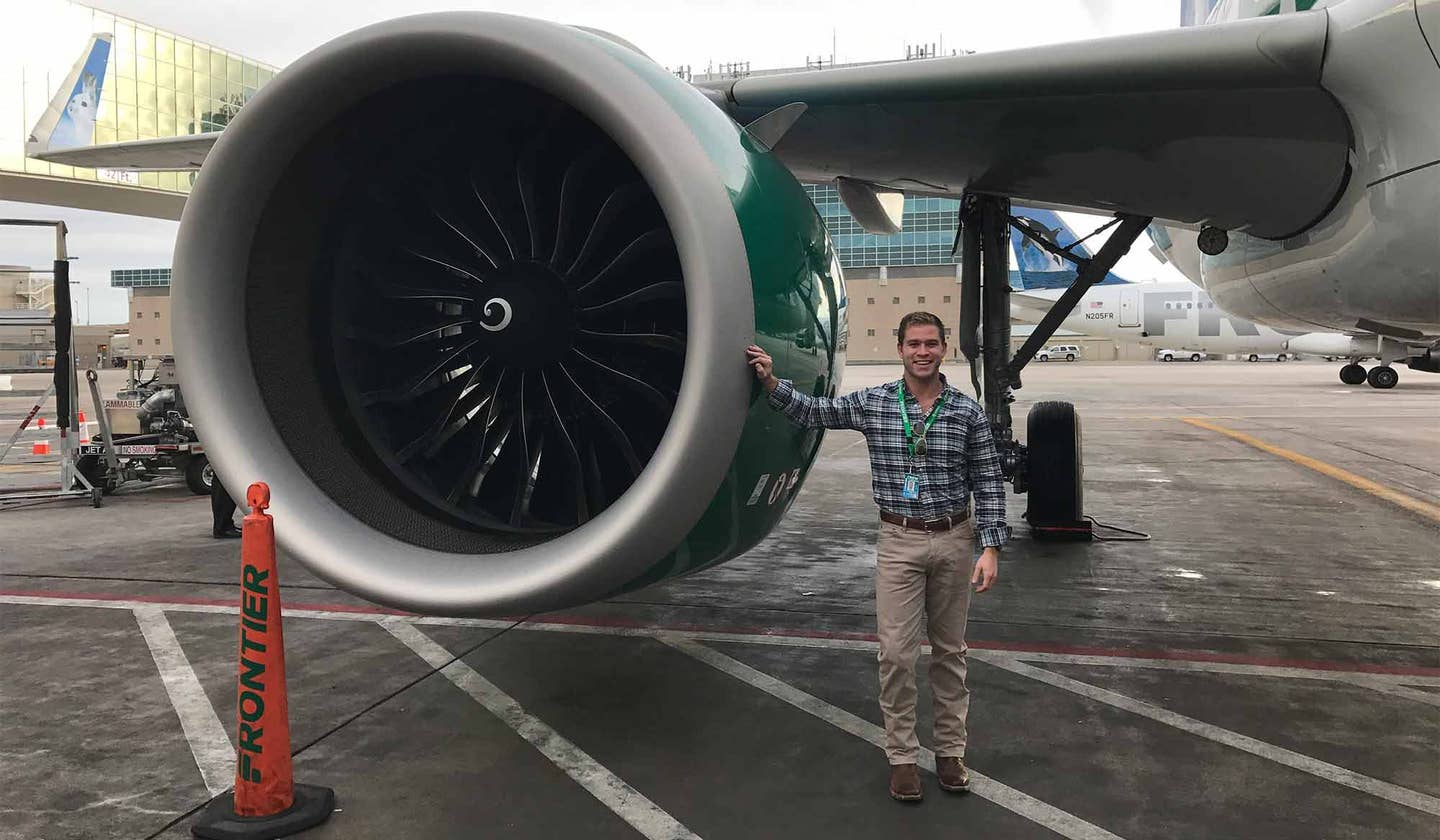
Tayler Boone, an ATP Flight School graduate and Frontier Airlines first officer, is a prime example of the opportunity that exists for pilots today. ATP
Global air travel trends and a wave of coming retirements are fueling an unprecedented demand for airline pilots that is already being felt. Regional carriers including Republic Airways, Cape Air and Horizon Air have had to cancel flights and cutback their schedules due to a shortage of pilots, and forecasts indicate the trend will accelerate. Boeing’s 2017 Pilot Outlook calculates airlines in North America will require 117,000 new pilots over the next 20 years, while globally about 637,000 new crewmembers will be needed. Moreover, these figures are 3.6 percent higher than the forecast of just a year ago, as the true dimensions of the expected shortage take shape. Airbus’s 2017 global forecast predicts some 534,000 new pilots will be needed by 2036 just to fly passenger airliners of 100 seats or more.
“Pilots are the currency now,” says Bruce Cavitt, a captain and pilot recruiter for regional carrier Envoy Air, “and it’s a little bit of an arms race to see which airlines can attract the pilots.”
This isn't the first pilot shortage the airline industry has faced, but this one appears deeper and less avoidable than previous shortfalls due to its global nature and because at the major airlines in the United States, "over half of their pilots will retire in the next 10 years," says airline pilot and Flying contributing editor Sam Weigel.
Shortages vary both globally and within regions. The Asia-Pacific region will account for a full 40 percent of the projected demand, while North America at the number 2 spot will need 18 percent of the new pilots, according to estimates. Major U.S. airlines have stepped up hiring as they’ve expanded recently, but aren’t currently experiencing a shortage because they can lure pilots from regional carriers. But this has intensified demand at the regionals, leading them to offer pilots signing and retention bonuses, higher base pay, provide tuition reimbursement and other incentives.
“We have options for 86 new 76-seat Embraer aircraft, and that’s why we have to be aggressive and responsive” in hiring, Cavitt says, echoing the situation many regionals face. Last year Envoy, PSA and Piedmont announced new hires would henceforth earn about $60,000 their first year, and “now it’s possible for a first-year regional first officer to top $80,000 with bonuses,” says Weigel.
Meanwhile expansion at the major airlines and the constant movement of captains upward from regionals has dramatically reduced upgrade times from first officer to captain at both the regionals and the legacy carriers. Horizon Air, among the regionals with the lowest attrition rates, has seen upgrade times drop from ten years to 2.5 years. Says Weigel, “Someone with 1,500 hours can theoretically be hired at a regional airline and get qualified to go to a major airline in only three to four years, which is a lot quicker than the seven to 12 years that’s been more typical up until now.”
The shortage and scramble to fill it with qualified, well-trained pilots is creating tremendous opportunities for many who’ve dreamed of a career with the airlines, and the financial incentives being offered are making this dream more obtainable.
“Our highest published target is 750” pilots per year says Cavitt. “We’re on track to hire more than 900, and management has in no way indicated we should tap the brake. If anything, we hear, ‘How do we get even more pilots in the pipeline?”
Aspiring airline pilots can take advantage of programs like ATP Flight School’s accelerated training with airline tuition reimbursement, the Envoy-American Airlines Cadet and SkyWest Pilot Pathway programs, and flow-through agreements that can provide a pathway to the cockpit at a major airline in a relatively short amount of time. Tayler Boone, an ATP Flight School graduate and Frontier Airlines first officer, is a prime example of the opportunity that exists for pilots today. “I started the [Airline Career Pilot Program] in January 2012, and five short years later I just landed an Airbus A321 with 230 passengers in Miami after doing a transcon,” Boone remarks. “After only three years with ExpressJet, I had offers to decide between flying the 747 for Atlas Air, the 777 for Southern Air or the A320 series for Frontier.” Taking advantage of timing the industry right, Boone concludes “there is no time like the present to become an airline pilot.”

Sign-up for newsletters & special offers!
Get the latest FLYING stories & special offers delivered directly to your inbox






